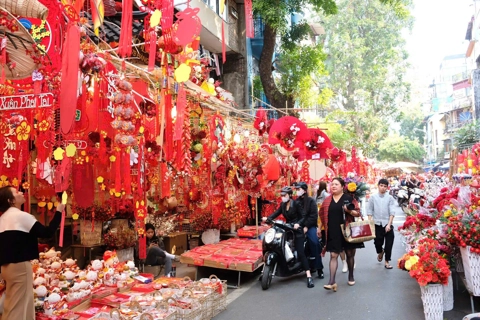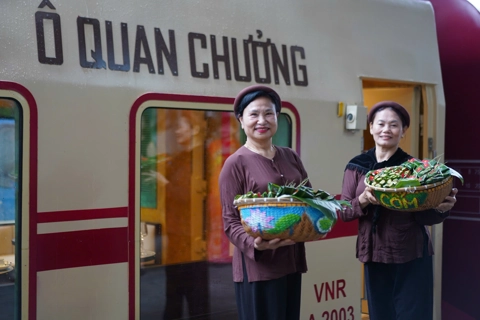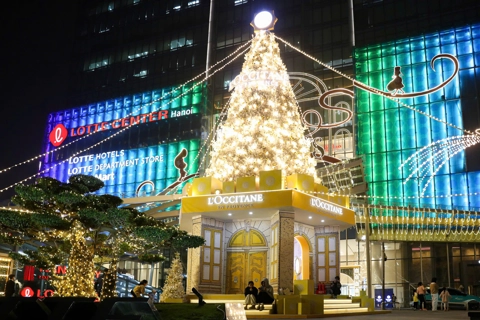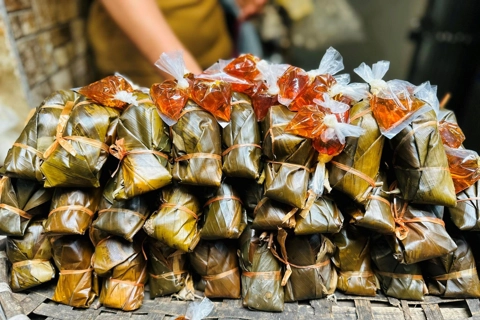Life
Vietnam National Drama Theatre stages The Tale of Kieu
Nov 28, 2016 / 05:06 PM
Truyen Kieu (The Tale of Kieu), a masterpiece written by Vietnamese poet Nguyen Du in the late 18th century, has provided a wealth of inspiration for playwrights.
The Vietnam National Drama Theatre’s production of The Tale of Kieu has created a theatrical sensation.
The Tale of Kieu has been staged in various traditional art forms: cai luong, (reformed theatre), cheo (popular opera), pantomime, and western-style opera. The Vietnam National Drama Theatre’s adaptation of this literary work combines singing and dancing, creating a new and exciting approach.
Ngo Quang Nang, a spectator, said“I feel happy after watching The Tale of Kieu today. It appears to embody some of the Vietnamese characteristics: humanity and courage. We have a deep culture represented by The Tale of Kieu. Tu Hai, a character in the play, who died in a standing posture, reflects the people’s struggle for freedom against a feudal regime.”
The Tale of Kieu has been staged in various traditional art forms: cai luong, (reformed theatre), cheo (popular opera), pantomime, and western-style opera. The Vietnam National Drama Theatre’s adaptation of this literary work combines singing and dancing, creating a new and exciting approach.
Ngo Quang Nang, a spectator, said“I feel happy after watching The Tale of Kieu today. It appears to embody some of the Vietnamese characteristics: humanity and courage. We have a deep culture represented by The Tale of Kieu. Tu Hai, a character in the play, who died in a standing posture, reflects the people’s struggle for freedom against a feudal regime.”

People’s Artist Lan Huong, who plays the wife of a silk seller, has been passionate about this new adaptation of The Tale of Kieu “Many Vietnamese know The Tale of Kieu, whose characters have become stereotypes: So Khanh (the unfaithful lover), Tu Ba (the procurer), and Hoan Thu (the jealous wife). The director and playwright don’t want the play to simply retell the story, but to convey a certain message.”
The play portrays the beauty of physical appearance and soul: talent, loyalty, heroism, and filial love. The main character, Thuy Kieu, who used to be seen as a symbol of oriental femininity resigned to her fate, is totally different in this new adaptation. Actress Diem Huong said "Watching our play, the audience will be surprised because the heroine Thuy Kieu no longer accepts her destiny, but struggles to escape from a suffocating society. This Thuy Kieu differs from what people usually imagine.”
Vietnamese culture is reflected in the costume details, dancing, and stage arrangements. The image of a lotus flower implies a human life which opens slightly, blossoms, and withers. Verses, which generations of Vietnamese have memorized, are repeated in the play’s lines and lyrics.
Director and People’s Artist Anh Tu said “This adaptation retains one aspect of the original: a beautiful and talented woman facing numerous miseries. I like Nguyen Du’s The Tale of Kieu because it remains relevant today. When money and illegitimate power are championed, norms and ethics are threatened.”
The play portrays the beauty of physical appearance and soul: talent, loyalty, heroism, and filial love. The main character, Thuy Kieu, who used to be seen as a symbol of oriental femininity resigned to her fate, is totally different in this new adaptation. Actress Diem Huong said "Watching our play, the audience will be surprised because the heroine Thuy Kieu no longer accepts her destiny, but struggles to escape from a suffocating society. This Thuy Kieu differs from what people usually imagine.”
Vietnamese culture is reflected in the costume details, dancing, and stage arrangements. The image of a lotus flower implies a human life which opens slightly, blossoms, and withers. Verses, which generations of Vietnamese have memorized, are repeated in the play’s lines and lyrics.
Director and People’s Artist Anh Tu said “This adaptation retains one aspect of the original: a beautiful and talented woman facing numerous miseries. I like Nguyen Du’s The Tale of Kieu because it remains relevant today. When money and illegitimate power are championed, norms and ethics are threatened.”








